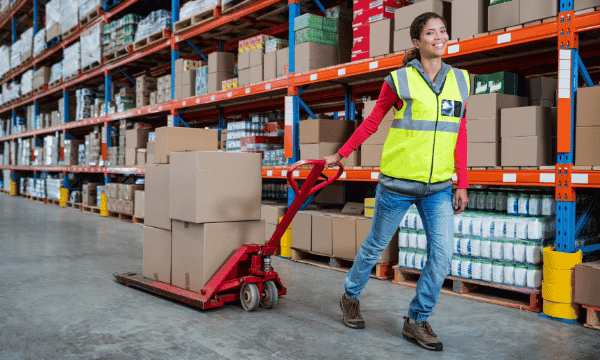How To Assess Manual Handling Tasks?
One question we get asked a lot is “how to assess manual handling tasks?” In this article, we outline the manual handling assessment process that should be used to assess manual handling tasks to reduce the risk of injury to your staff.
Manual handling is the cause of over a third of all workplace injuries, with the health and social care sector having the highest incident rate of all employment types!
Most of these injuries are musculoskeletal in nature with the back being the site injured in the majority of cases. Back injuries are extremely painful and can have long-reaching consequences, so prevention is definitely better than cure. Manual handling is simply not seen as a high-risk task by those involved in this type of work, so is seldom given the attention it requires from a health and safety point of view, hence the high incidence rate. The good news is that by assessing these manual handling risks with little thought and limited expense many of these injuries can be avoided.

In the first instance, it is important to state that the law requires only the tasks that carry a significant risk of injury need to be risk assessed.
These are tasks where loads are heavy, perhaps they have to be carried over long distances or are repetitive.
The best control measure is to eliminate the need to carry out the task in the first instance through the use of mechanical lifting aids such as forklift trucks. However, this is not always possible. You may be able to provide manual lifting aids such as sack trucks or trolleys, but remember using this type of equipment does not remove the manual handling element and a risk assessment may still be required. Manual handling tasks are assessed by looking at four key areas, also known by the acronym TILE.
- Task
- Individual
- Load
- Environment
This makes it easier to assess the activity properly.
The “Task” element is an oversight of the activity as a whole.
Questions you need to ask are things such as:
- How far is the load carried?
- Is it a one-off task or is it carried out regularly?
- Are there any risky movements imposed such as bending and twisting?
- Is the work rate dictated, by a machine or process for example?
- What time of day does the work need to be done?
For the “Individual” you must employ somebody who is physically capable of carrying out the work.
Those with pre-existing medical conditions and injuries, pregnant women, young people and those with learning difficulties may need extra control measures or it simply may not be safe for them to carry out the task. Other questions to include are:
- Is it a team lift?
- Has the employee had manual handling training?
- How experienced are they at manual handling?
- Do they require any Personal Protective Equipment (PPE)?

The obvious question about the “Load” itself is “how heavy is it?”
However, you also need to consider:
- What is the heaviest side?
- Shape and dimensions of the load.
- How easy is it to grip?
- Can it be reduced to smaller loads?
- Is it hazardous in itself, for example, is it hot, sharp or a chemical?
- Does the centre of gravity change? This will be the case for liquids, sacks of loose items, animals and people!
Finally with regards to the “Environment” you need to know:
- Is there enough space to carry out the task?
- Does the lifting route encompass doors, stairs, ramps, and vehicular routes?
- Is the flooring in good condition and free from obstruction?
- What is the temperature?
- What are weather conditions likely to be on the day the task is carried out (outside work only!)?
- Is there sufficient light to carry out the task?
Once you have covered the TILE factors you can then identify the conditions that are going to cause the highest risk. It is these elements that you need to provide control measures for. Control measures can include reducing the size of the load, locating delivery vans as close to the final destination of the load as possible, carrying out the work at quieter times of the day, identifying where lifts can be used rather than taking the stairs and buying stock or materials in smaller sizes that are easier to lift.
There is no set format for this assessment, but lots of examples are available online or contact Envesca for help compiling your own form. If you employ over five people then legally you must keep a record of these risk assessments and review them if any of the TILE factors change.
If you have a question or enquiry about health and safety, please call the team on 01452 502113 or complete our enquiry form.
Find this helpful?
Signup to our email notifications to receive alerts when we publish new blogs. We promise not to spam your inbox, you will just get a short snappy intro to Health and Safety articles we think you will love.
"*" indicates required fields

Health and Safety Secrets for Business Start-Ups
If you’ve got a question or query, please contact our super friendly team, they will be delighted to help you!
Simply get in touch via phone or email.

Free
Resources &
Downloads
Informative. Useful. Practical.
Here at Envesca we believe that we are good at giving proactive, sensible and useful advice. Below you will find some free resources that you can download on a host of subjects that will help you and your business.
Training Available
Envesca offer a number of different training courses, which offer advice and guidance on these topics.





